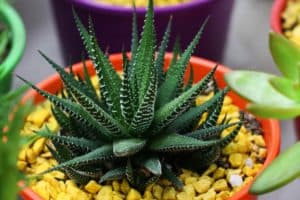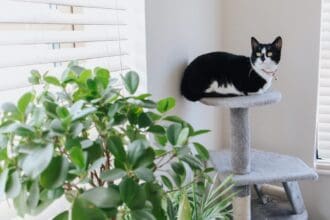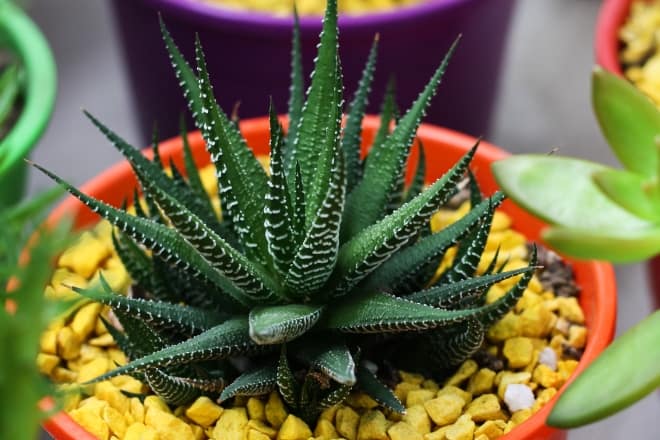
via: Unsplash / Lisa Simenz Vera
Haworthia fasciata, also known as Zebra plant, is the perfect indoor succulent: its pointy leaves, deep green color, and elegant white stripes will easily complement any interior. But perhaps more importantly, Zebra plants are robust, low maintenance, and can go for weeks without watering. As long as you know how to care for succulents, your little green friend should be fine.
Read on to learn how to look after your Haworthia fasciata and keep it happy, thriving, and looking its best.
Contents
What Is Haworthia fasciata?
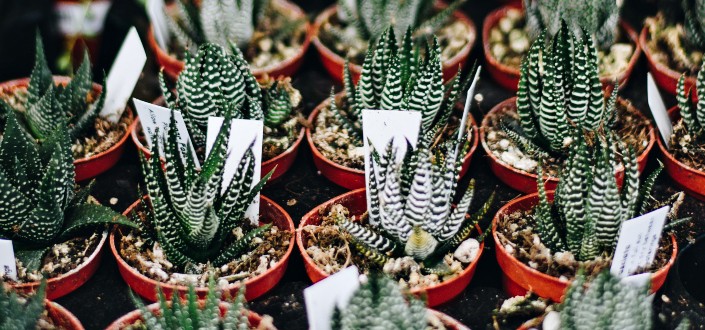
via: Unsplash / Ian Keefe
Haworthia fasciata is native to South Africa, where it grows in the acidic, stony soil of the country’s shrublands. It has long left its original homeland and is now one of the most popular household succulents.
You may have heard people refer to Haworthia fasciata as Zebra plant or Zebra cactus on account of its distinctive white stripes. That, however, is somewhat of a misnomer, as it is actually a succulent and not a cactus.
Why Is Knowing How To Grow And Care For Haworthia fasciata Important?

via: Unsplash / Afzalbek Sadikov (Uzbekistan)
For all their robustness, Haworthia fasciata are not immortal. You can still kill them if you don’t know what you are doing. That’s why it is vital that you know how to properly care for your Zebra plant.
How To Grow Zebra Plants (Haworthia fasciata)
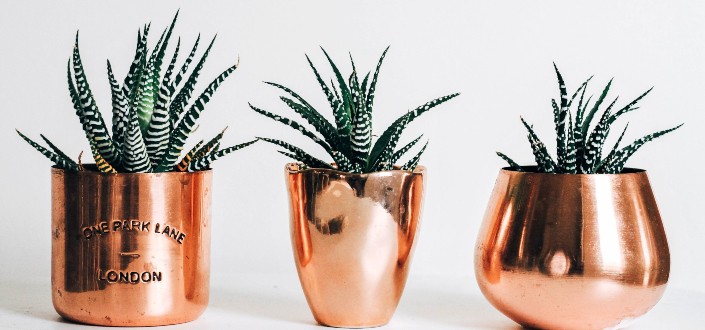
via: Unsplash / Kara Eads
Haworthia fasciata is super easy to grow, rarely suffers from pests and diseases, and propagates easily. It is also non-toxic to pets! All that makes Zebra plants ideal for beginners, as well as just about anyone who might be looking for a low-maintenance plant. They also make for perfect housewarming gifts.
1. Make Sure You Have The Right Type Succulent
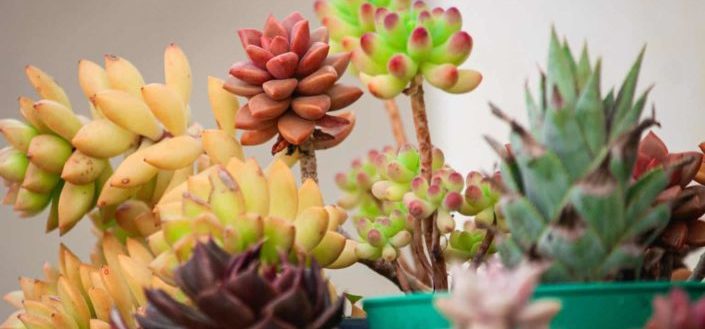
via: Unsplash / Eduardo Soares
Did you know that there are some 80 species of Haworthia? It’s no wonder, then, that Haworthia fasciata is often mistaken for other types of succulents and especially Haworthia attenuate.
While the differences between the two species can be quite subtle, you can easily tell them apart by feeling their inner leaves. Those of the Zebra plant are fat and smooth, while the leaves of Haworthia attenuate are thinner and bumpier.
People also often mistake Haworthia fasciata for aloe, which can have similarly chubby and tapered leaves that turn bright to dark green. That should come as no surprise as both plants are from the same family. However, unlike aloes, Zebra plants tend to be rather small. They are also very slow growers and won’t take nearly as much space in your home if grown as indoor succulents.
So, what do real Zebra plants look like?
For starters, they are generally small. Theoretically, they can grow up to 5 inches (13 cm) in height and 8 inches (20 cm) in width. In reality, though, Zebra plants rarely grow taller than 4 inches (10 cm).
The stem is short and almost invisible as it is surrounded by numerous thick leaves. They are green, triangular-shaped, and have narrow white stripes on the outside. Each leaf is about 1.1–2.3 inches (3–6 cm) long, 0.5 inches (1.5 cm) wide, and 3–5 mm thick. Color-wise, Zebra plant leaves can be gray-, brownish-, or yellowish-green.
Leaves are arranged in rosettes of about 40 to 80 leaves each. Individual rosettes can reach up to 7 inches (18 cm) in height and 1.9–5.9 inches (5–15 cm) in diameter. What’s interesting here is that the leaves of a rosette can change direction and grow erect or flat depending on how much sunlight or shade they are exposed to. This is especially true when it comes to outdoor succulents.
2. Use The Right Soil Mix
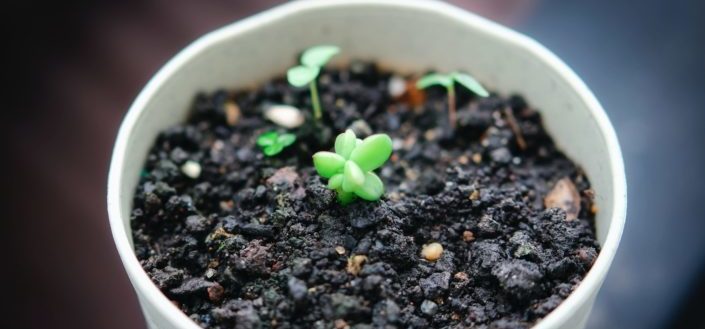
via: Unsplash / Nguyen Bui
Whether you plan to grow your Haworthia fasciata indoors or outdoors, it will need a well-draining soil mix with 50–70% mineral grits such as perlite, pumice, or coarse sand. That will ensure that water drains well and the roots will get plenty of air. You can either buy a ready-to-use cactus potting mix or make your own.
3. Get A Good Pot
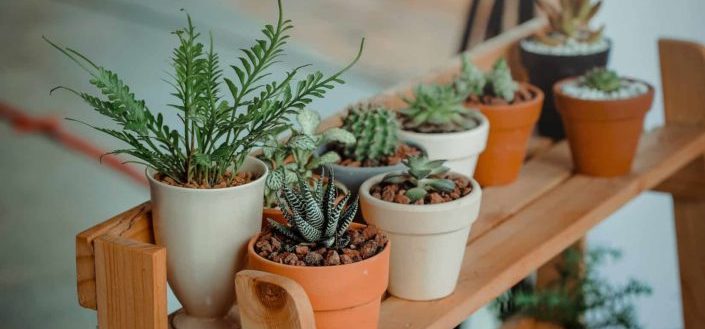
via: Pexels / Min An
Be sure to get a container with drainage holes. As far as the size goes, the pot can be on the smaller size as Haworthia fasciata are notorious for their slow growth.
4. Ensure Your Zebra Plant Can Get Enough Light
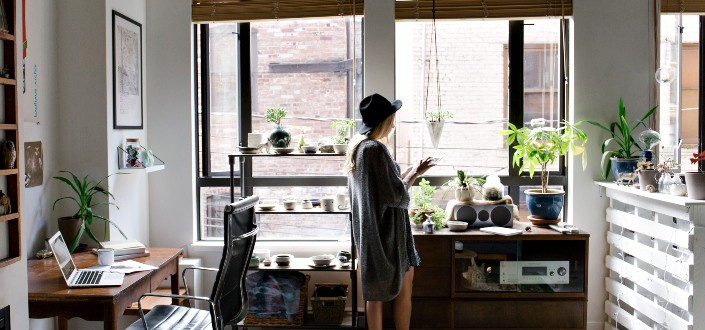
via: Unsplash / Bench Accounting
Haworthia fasciata does best in partial shade or filtered light. If it gets more light than it needs, it will turn a deep red shade — a sure sign that the plant is stressed. And if it is exposed to too much light, it will turn white and eventually dry up.
If you are thinking of growing a Zebra plant in your garden, pick a spot that gets four to six hours of sunlight in the morning.
And if you’d rather keep your Haworthia fasciata indoors, that’s great! Its capacity to tolerate low light makes it perfectly suited for life indoors. Simply place the pot near a west- or east-facing window that gets plenty of bright light.
5. Maintain The Right Temperature

via: Unsplash / Ilse Orsel
Haworthia fasciata don’t like the cold. They do best in temperatures between 65°F (18°C) to 80°F (26°C) and not so well below 50°F (10°C). And if it gets colder than 30°F (-1.1°C) in the area where you live, it’s best to grow your Zebra plant indoors — or at least bring it in when the temperature drops.
6. Know How To Water Zebra Plants

via: Pexels / Zen Chung
If you already know how to water succulents, you shouldn’t have any problems looking after your Haworthia fasciata. These plants do not require a lot of water and can go for weeks on end without any (although it is not recommended).
For best results, use the good old “soak and dry” method. During the April–September growing season, drench the plant in water and let the soil drain naturally. Be sure to remove any water that pools in the pot saucer. Allow the soil to dry out fully between waterings, rinse, and repeat. Just remember that the soil should be dry to the touch but not bone dry.
Watering in the wintertime is a bit trickier. If you overwater your Zebra plant and then it gets exposed to cold temperatures or a draft, it may get sick — or even die. So, don’t water your plant as often in the wintertime, and make sure the topsoil layer is completely dry before watering.
7. Know How To Propagate Zebra Plants
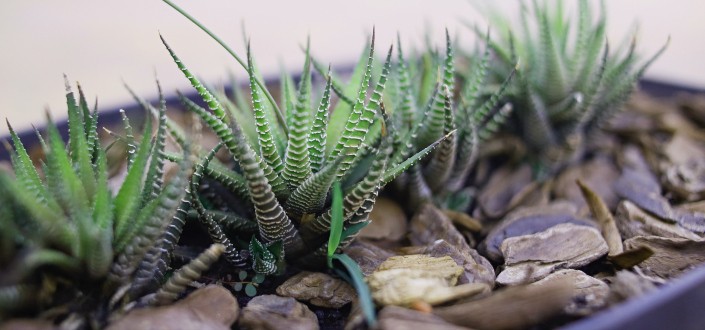
via: Pexels / Vidal Balielo Jr.
Before getting a Haworthia fasciata, be sure to read up on how to propagate succulents. Like most succulents, a healthy Zebra plant will produce offsets or pups around its base. All you need to do is to gently remove the pups from the mother plant and allow them to dry for a couple of days. Then, transfer them to another pot with a well-draining soil mix.
Alternatively, you can propagate a new plant by cutting a couple of inches of leaves from the old one. Let the wound dry out and heal for one to two days before planting them.
Whichever propagation method you opt for, be sure to water the soil once and then wait for a small sign of new growth before watering again. This way, you will prevent overwatering and accidentally killing the young plant.
8. Know When To Expect Flowering

via: Pexels / Nick Bondarev
When grown outdoors, Zebra plants flower in the fall, usually in October and November. Indoor Haworthia fasciata do not bloom as often.
The flowers are small, tubular, and white or pink colored. They grow on a thin, tall stem.
9. Know When To Fertilize Your Haworthia Fasciata
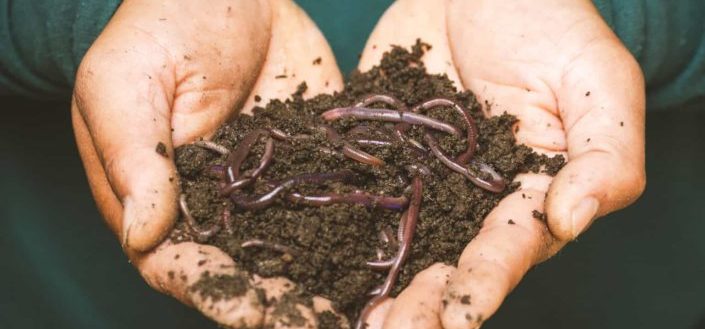
via: Pexels / Sippakorn Yamkasikorn
From April to September, feed your plant once a month using a diluted liquid fertilizer. However, make sure not to overfeed it at the peak of summer. Unlike other succulents, high temperatures may cause this genus to slow down and eventually go dormant. Do not fertilize during the winter season.
10. Know How To Repot
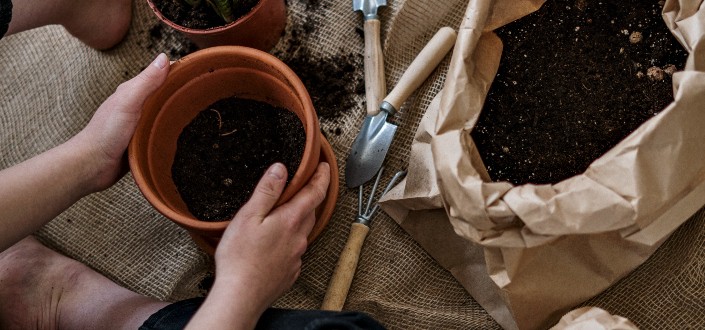
via: Pexels / cottonbro
As mentioned above, Zebra plants are slow growers, and repotting is rarely necessary. For the most part, they tend to stay small in pots. However, if your plant outgrows its original pot, you can transfer it to a slightly bigger pot in the springtime.
In any case, however, it’s a good idea to renew the soil mix every couple of years, even if no repotting is required.
More Awesome Succulents
Want to discover more awesome succulents?
- Start by reading about how to grow burro's tail or Sedum morganianum.
- Follow that up with some cool info on Aeonium arboreum.
- Finish by learning how to grow an elephant bush or Portulacaria afra.
In Conclusion
Haworthia fasciata is a gorgeous-looking yet low-maintenance plant that should fit right in any home or office. A cute little Zebra plant can brighten up your environment, adding a pop of color and a touch of understated elegance. Just make sure you know how to care for succulents!


